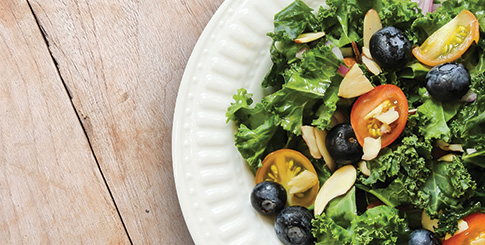Superfoods from Peru implemented successful pairings of varied superfoods at Walmart. In-store sampling events included avocado and blueberry smoothies with almond milk (all three ingredients are considered superfoods); chocolate mousse with avocados used as a butter substitute; peach and avocado crostini; and kale salad with avocado, blueberries, olive oil, and balsamic vinegar. Nearly any pairing with highly popular avocados gets results.
Naturipe, too, has championed cross-promotions over the past five years, offering free blueberries or a dollar off coupon with the purchase of specific products such as yogurt or cereal, for the latter to connect to what Roberts calls the ‘health halo’ effect of berries.
Retailers have typically encouraged such partnerships, bringing together produce suppliers and packaged goods companies. “The more progressive retailers got together with their grocery and produce departments to drive sales across the store,” explains Roberts.
Lucido points out that consumers’ growing interest in ethnic cuisines could be a boon for superfoods from other cultures like ginger and green tea, or even cranberries or pumpkins. She notes that lentils and quinoa, currently hot superfoods, were relatively unknown until recently. “They started on the periphery,” she describes, but when “combined with familiar ingredients, people will try them.”
Suppliers and marketing executives recommend focusing on specific attributes when promoting commodities for “super” health benefits, which Roberts believes will resonate better with consumers.
He cautions, however, that there is no beyond-a-doubt evidence to prove common superfood claims, such as a connection between antioxidants and cancer prevention, even though there have been many studies suggesting a link. For this reason and more, government regulations prevent companies from stating any such connection on packaging or marketing materials. Putting up a sign or including a label noting blueberries are high in antioxidants, is permitted.
In many cases, marketing messages involve comparisons. “The concept is, for example, that fresh figs have more potassium than bananas, lychee nuts have more polyphenols than red grapes, guava has more Vitamin C than oranges,” Grinstead says, but reiterates there is no specific scientific designation on superfoods.
Potential for Overuse
The lack of clear guidelines about what a superfood is can present challenges. “My personal opinion is that the term ‘superfoods’ tends to get overused and creates confusion about what it means,” shares Roberts. “Consumers already understand they should eat more fruits and vegetables for their health. In the produce department, almost every item claims to be a superfood and, ultimately, most of them are—but the term loses its meaning.”



